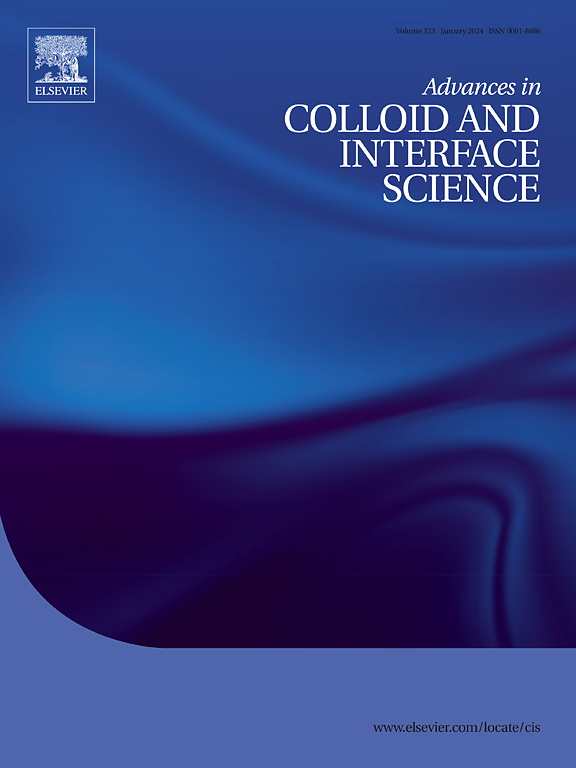油凝胶、水凝胶和凝胶作为新型食用油墨在食品3D/4D打印中的应用
IF 19.3
1区 化学
Q1 CHEMISTRY, PHYSICAL
引用次数: 0
摘要
三维(3D)和四维(4D)打印及其在食品中的应用最近大幅增加。然而,了解食品的主要成分如何影响打印是至关重要的,以便生产更广泛的结构,并提供个性化的营养和定制。然而,3D/4D打印的一个问题是缺乏能够模仿真正食物特性的打印材料。3D/4D打印的各个方面的研究越来越多,证明了这项技术对食品工业的重要性。加快这项技术研究的动机之一是有可能提供适合口味偏好和某些饮食要求的定制产品。本文综述了基于凝胶的3D/4D打印技术的发明和应用,包括水凝胶、油凝胶和凝胶在3D/4D打印食品中的应用。我们在这项研究中的目标是对3D/4D打印的最新技术进行全面分析,重点关注最终结构的重要方面,例如打印工艺、材料、结构设计、刺激响应,并详细说明一系列凝胶(水凝胶、油凝胶和凝胶)的显著应用。还讨论了3D/4D打印中设计或使用的内部结构的功能,以及它们如何影响打印食品的性能。最后,我们对这一尖端技术的最新发展进行了概述。综上所述,采用基于凝胶的3D/4D打印是一种可行的方式来创建个性化的食品。对这项技术潜在优势的研究是令人着迷的,尽管事实上仍有一些障碍需要解决,例如,提高凝胶基印刷的可印刷性和机械特性。即使是3D/4D打印技术也有很大的潜力,保持其全部潜力并优化其实际应用将需要不断的研究和开发。本文章由计算机程序翻译,如有差异,请以英文原文为准。

Application of oleogels, hydrogels and bigels as novel edible inks for 3D/4D printing of food products
Printing in three dimensions (3D) and four dimensions (4D) along with its application in food products has recently increased substantially. However, it is critical to comprehend how the main components of food items affect printing so as to produce a wider range of structures and offer personalized nutrition and customization. However, the lack of printed materials that can mimic the properties of real food is a problem with 3D/4D printing. The importance of this technology to the food industry is demonstrated by the increasing number of studies on various aspects of 3D/4D printing. One of the motivations for stepping up research into this technology is the possibility of supplying customized products that are suited to taste preferences and certain dietary requirements. The invention and use of gel-based 3D/4D printing, including hydrogels, oleogels and bigels in the creation of 3D/4D printed food are examined in this review. Our goal in this study is to present a thorough analysis of the state-of-the-art in 3D/4D printing, focussing on important facets of the final structures e.g., printing processes, materials, structural design, stimuli-responsiveness, and elaborating on notable applications across a range of gels (hydrogels, oleogels and bigels). The functions of inner structures designed or used in 3D/4D printing are also discussed, along with how they impact the properties of printed food. Lastly, we provide an overview of the latest developments in this cutting-edge technology. To sum up, employing gel-based 3D/4D printing is a viable way to create personalized food items. Research into the potential advantages of this technology is fascinating, despite the fact that there are still obstacles to be addressed, e.g., enhancing the printability and mechanical characteristics of gel-based printing. Even 3D/4D printing technology has a lot of potential, maintaining its full potential and optimizing its practical applications will require ongoing study and development.
求助全文
通过发布文献求助,成功后即可免费获取论文全文。
去求助
来源期刊
CiteScore
28.50
自引率
2.60%
发文量
175
审稿时长
31 days
期刊介绍:
"Advances in Colloid and Interface Science" is an international journal that focuses on experimental and theoretical developments in interfacial and colloidal phenomena. The journal covers a wide range of disciplines including biology, chemistry, physics, and technology.
The journal accepts review articles on any topic within the scope of colloid and interface science. These articles should provide an in-depth analysis of the subject matter, offering a critical review of the current state of the field. The author's informed opinion on the topic should also be included. The manuscript should compare and contrast ideas found in the reviewed literature and address the limitations of these ideas.
Typically, the articles published in this journal are written by recognized experts in the field.

 求助内容:
求助内容: 应助结果提醒方式:
应助结果提醒方式:


